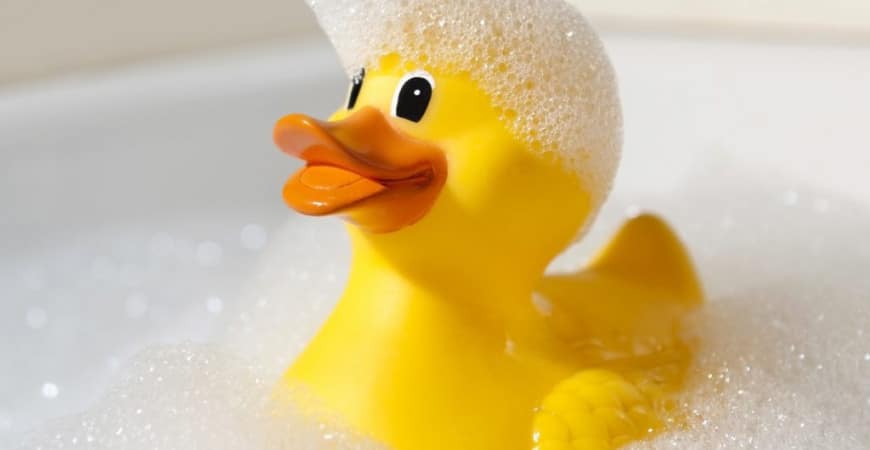Is this the end of a loveable bath toy?

Is this the end of a loveable bath toy?
According to researchers, it's a resounding no. However, there are some key practices that are very important in keeping bath toys 'safe' and hygienic for kids during bath time.
As long as I can remember, the conventional rubber duck has been the quintessential bath time toy. However, like most parents, we’ve surely known that they can’t be the most hygienic toy item. Researchers have echoed this sentiment with their own study conducted on the most popular bath time toy: The Rubber Duck
A research article, recently published in the journal – NPJ Biofilms and Microbiomes in March 2018 has shared some startling conclusions into the bacterial world inside our bath time rubber duckies. As we know, most rubber ducks are hollow inside, allowing for water to get through and for it to be squeezed out (what we hope) with a duck-like sound. A study involving 19 rubber duck bath toys from Swiss households have discovered a sophisticated bacterial and fungal community within the confines of the rubber duck. The study spanned a total of 11 weeks with bath usage occurring every second day.
Biofilms (thin, slippery layers of bacterial communities and other microorganisms) unmistakable to the eye, were found to dwell in the insides of the rubber duck. It even featured pathogenic bacteria such as Pseudomonas – a bacterium that can cause serious ear, eye and gastrointestinal tract infections in people. Scary.
What’s causing this nasty growth?
Lead researcher Frederik Hammes has namely put it down to the plastic material of the rubber duck and further explained this idea to CNN:

The inside of the rubber duck lined with a slimy growth of bacteria and microorganisms.
“All these soft plastic materials have softeners called plasticisers in them to make them flexible,” Hammes, who conducted the study with five other researchers at the Swiss Federal Institute of Aquatic Science and Technology, told CNN. “(The plasticisers) Migrate out of the plastic into the water. The bacteria like to eat them.”
You’ll be happy to know that our tap water alone cannot encourage this type of bacterial growth, however, when mixed with dirty bath water, warm conditions and this plastic material- well that creates a very nice living environment for our tiny guests.
How harmful is this bacterial growth to us and our children?
As humans, we encounter all sorts of bacteria daily. Most of these organisms are actually quite excellent in encouraging and building our immune systems to ward off possible infection. So, don’t freak out just yet! Bacteria can do us good! However, it is quite concerning for people with weakened immune systems, particularly those who are susceptible to infection such as children and the elderly.
What can we do to prevent bacterial growth in our kid’s toys during bath time?
It’s not all doom and gloom! There are many safe practices that can be employed in maintaining the cleanliness of our kid’s bath toys. They include and are not limited to: boiling, removal of water after use and cleaning toy items with hot water and soap. Or the easiest way to prevent any bacterial growth inside your rubber bath toy is to just plug the hole entirely (super glue can do the trick). It may be the end of Mr Ducks squirting fun, but it does give us all some peace of mind during bath time.
Sources:
Neu, L., Bänziger, C., Proctor, C., Zhang, Y., Liu, W. and Hammes, F. (2018). Ugly ducklings—the dark side of plastic materials in contact with potable water. npj Biofilms and Microbiomes, 4(1).
Doug Criss, C. (2018). The inside of rubber duckies are full of bacteria. You don’t seem surprised. [online] CNN. Available at: https://edition.cnn.com/2018/03/29/health/rubber-duck-bacteria-study-trnd/index.html
Image source: Google & Swiss Federal Institute of Aquatic Science and Technology (Eawag)
Categories
- About Our Store (1)
- Announcements (1)
- Helpful Advice (16)
- In depth review (2)
- Special Offers & Deals (2)










